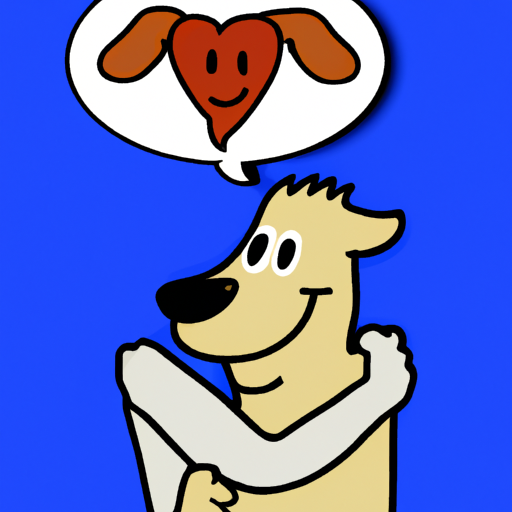Dogs are known as man’s best friend for a reason. They offer unconditional love, companionship, and a sense of security. But have you ever wondered why your dog seems to “hug” you? In this article, we’ll delve deep into this topic, exploring this endearing canine behavior from various perspectives.
How Dogs Show Affection
Dogs express their emotions differently than humans. They rely heavily on body language, and their ways of communicating affection can seem unusual to us.
- Tail Wagging: Dogs often wag their tails when they’re happy or excited.
- Licking: Dogs use licking as a way to show submission or affection.
- Leaning In: A dog leaning into you can be a sign of trust and affection.
- Jumping Up: While this can be seen as bad manners, it’s often a way for dogs to show their excitement and happiness to see you.
- Hugging: Yes, dogs do “hug” in their own way. This is usually seen when they put their paws on you or lean into you.
The Science Behind “Dog Hugs”
The behavior that we interpret as a “hug” from our dogs can be attributed to a few key factors:
-
Pack Behavior: In a pack, dogs often sleep piled on top of each other for warmth and protection. This behavior may translate to what we perceive as a hug.
-
Trust and Security: When a dog puts its paws on you or leans into you, it’s a sign of trust. They feel safe and secure with you.
-
Affection: Dogs have a deep capacity for affection, and they express it in various ways, including what we interpret as hugs.
Misinterpretations and Miscommunication
While we may interpret certain behaviors as “hugs”, it’s important to realize that dogs communicate differently than humans. What we perceive as a hug can sometimes be a dog’s way of asserting dominance or seeking attention. Always pay attention to your dog’s overall body language to understand their intentions clearly.
Encouraging Positive Behaviors
If you enjoy your dog’s “hugs”, it’s essential to encourage this behavior in a positive and healthy way. Here are some tips:
- Training: Teach your dog to “hug” on command. This can help control the behavior and ensure it’s not disruptive or inappropriate.
- Positive Reinforcement: Reward your dog when they “hug” you in an appropriate and calm manner.
- Boundaries: Make sure your dog understands when it’s okay to “hug” and when it’s not. This is especially important when interacting with children or people who are not comfortable with dogs.
Frequently Asked Questions (FAQ)
Q: Why does my dog put its paws on me?
A: This could be a sign of affection, a request for attention, or an attempt to assert dominance. It’s important to consider the context and the rest of the dog’s body language.
Q: How can I teach my dog to “hug” on command?
A: Start by associating a command word with the behavior. Reward your dog when they “hug” you after you use the command word. Over time, they’ll learn to associate the command with the behavior.
Q: Is it okay for my dog to “hug” other people?
A: It depends on the other person’s comfort level with dogs. Always ask before allowing your dog to “hug” someone else.
Q: How can I discourage my dog from “hugging” too much?
A: Consistent training and setting boundaries are key. Reward your dog for calm behavior and discourage jumping up or being overly physical.
Q: Can a dog “hug” be a sign of anxiety?
A: In some cases, a dog might “hug” because they’re feeling anxious or insecure. If your dog seems to be “hugging” excessively or in stressful situations, it might be worth consulting with a vet or a dog behaviorist.
In conclusion, while dogs may not “hug” in the human sense, they do use physical contact as a way to express trust, security, and affection. As caregivers, it’s crucial for us to understand and respect their unique ways of communication.



